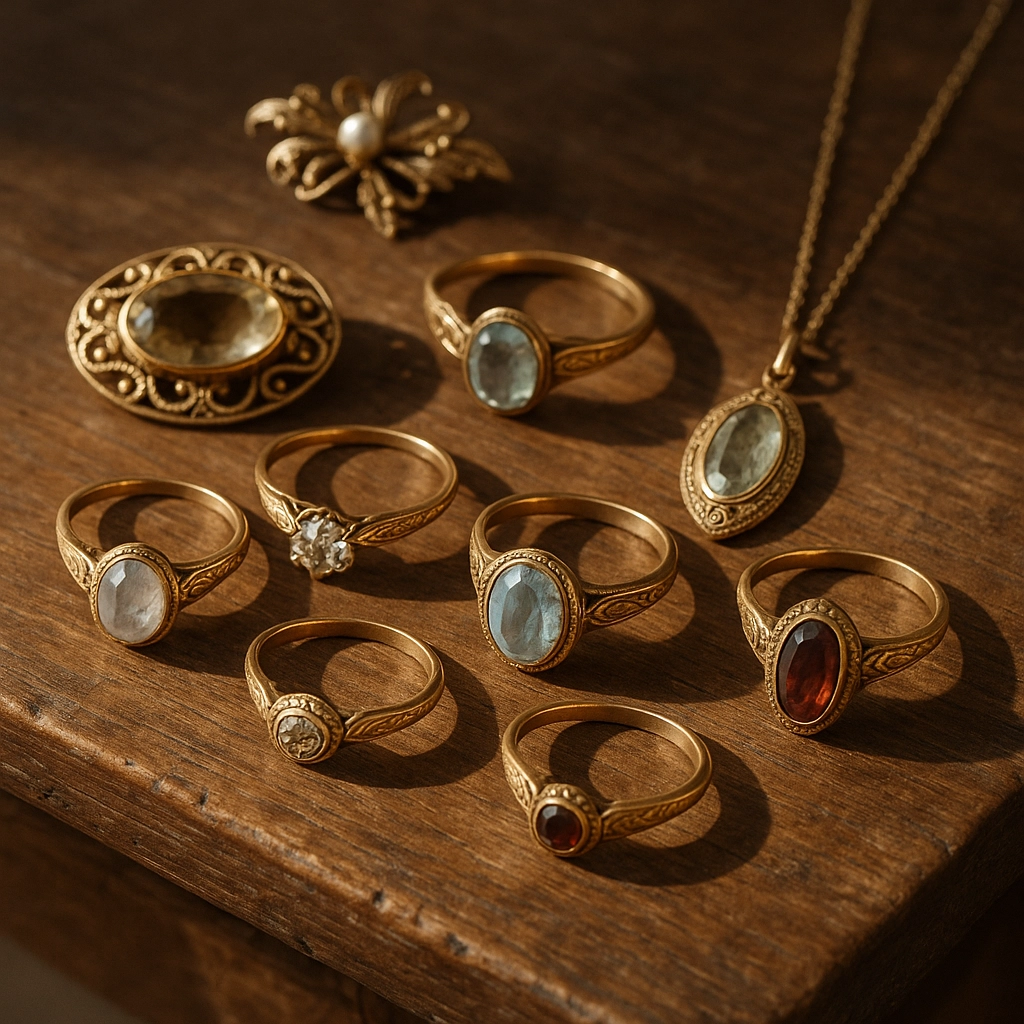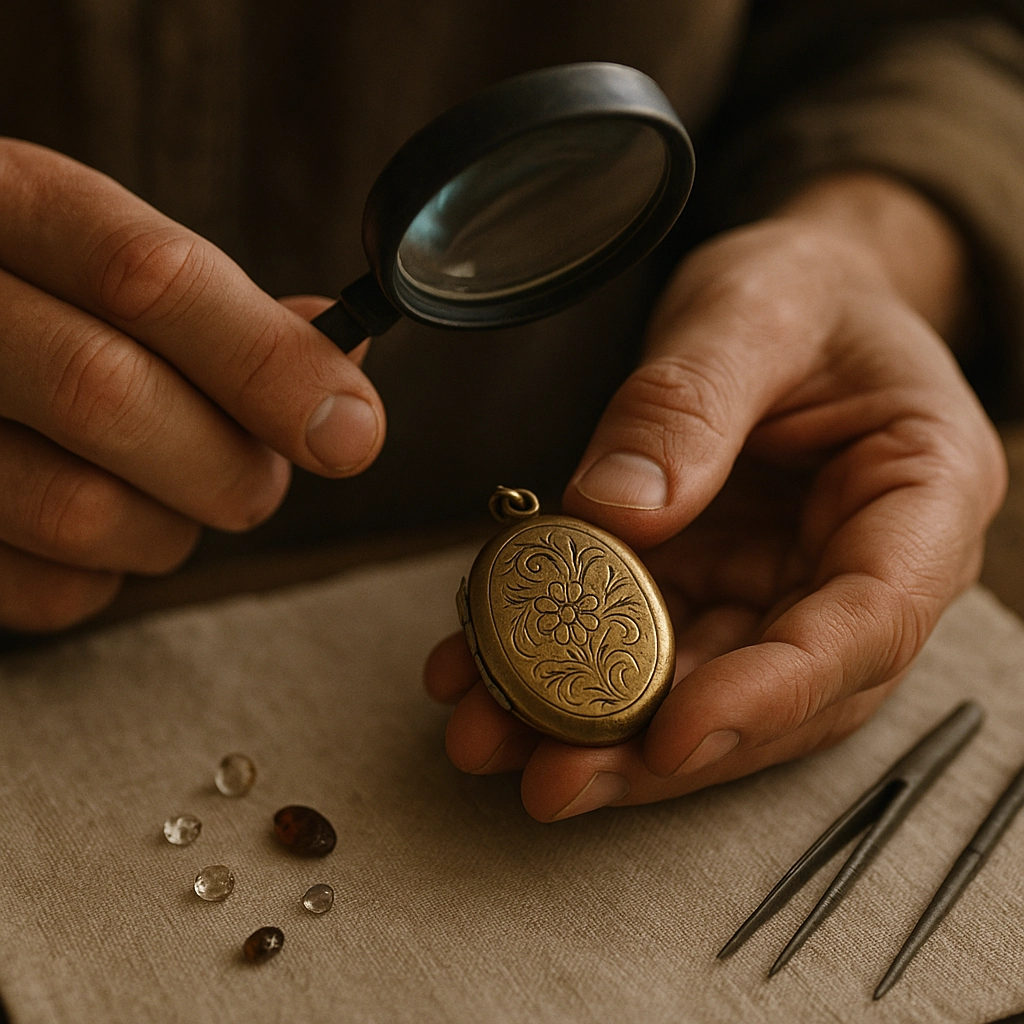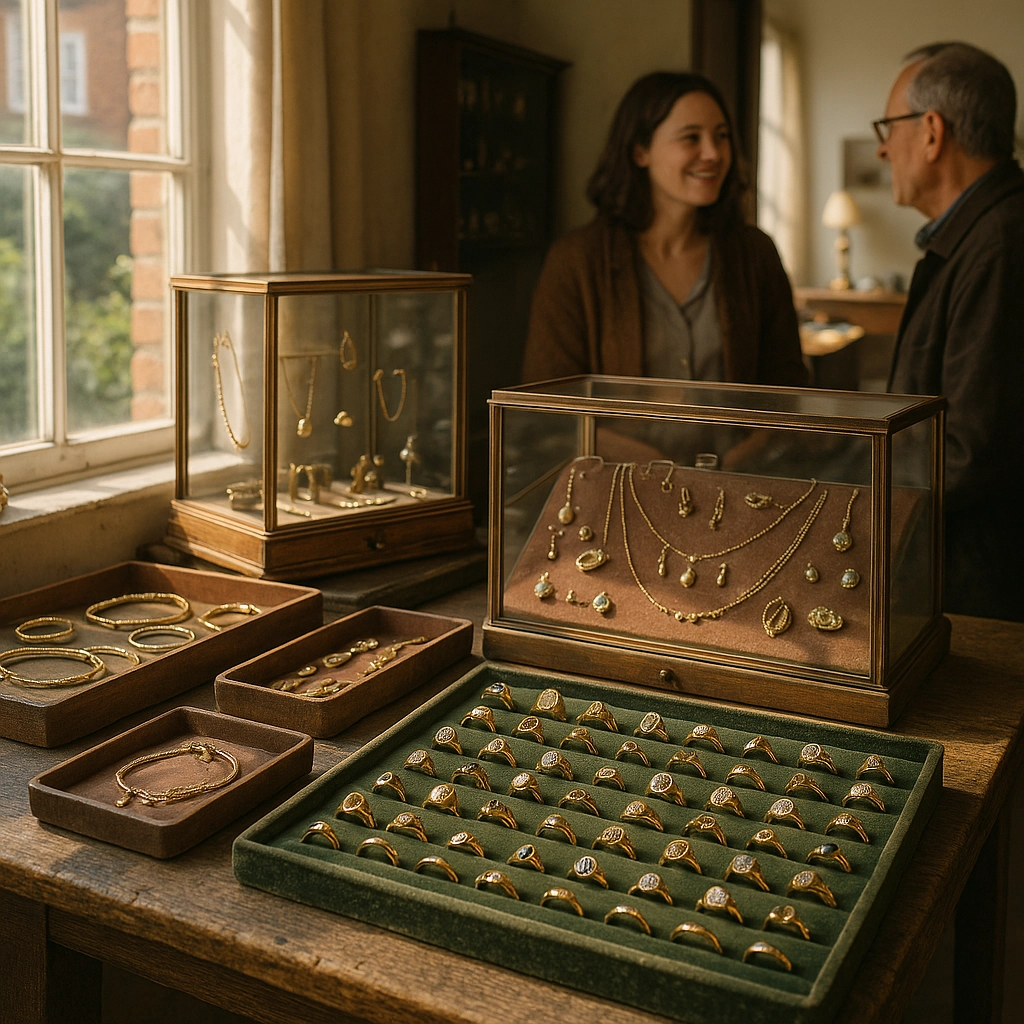How to Choose Ethical and Sustainable Vintage Jewelry for Your Collection
If you’re anything like me, adding a piece of vintage jewelry to your collection isn’t just about finding something beautiful—it’s about telling a story and making a choice that’s good for our planet. Every time I pick up a stunning vintage Rolex or a pair of classic cufflinks, I can’t help but think about its journey, the hands it’s passed through, and the world it’s seen.
But I also know that picking the right piece—one that’s truly ethical and sustainable—can be a little overwhelming at first.
Let’s break down how to spot quality, seek out trusted sellers, and build a collection you can feel genuinely good about.
Why Vintage Jewelry is an Ethical & Sustainable Choice
I love vintage jewelry for so many reasons, one of them being its low impact on sustainability.
When I choose pre-owned pieces, I know I’m not contributing to new mining or manufacturing—which means less demand for fresh materials, and less environmental strain. Precious metals like gold (especially those beautifully soft 14-karat pieces!) and gemstones are made to outlast generations, making them the perfect candidates for a long, reusable life.
Vintage pieces are essentially the MVPs for a circular economy: we get to extend their stories, and nothing new needs to be made. Doesn’t that feel great? Plus, there’s a certain magic in knowing your ring or necklace has already seen decades of style changes and still shines just as bright.
Have you ever found an old piece that just seemed to call your name? I’d love to hear what drew you to it!

What Makes Vintage Jewelry Ethical? My Checklist
When I’m out hunting for ethical vintage treasures, here are some key things I pay attention to:
Material Composition: The Greener, the Better
The big win with vintage jewelry is that all the precious metals and stones have already been mined. But within that, I look for items that indicate recycled content—like older pieces that mention recycled gold or silver. Even better if you come across artisan makers that upcycle old components or settings. That’s a true win for eco-friendly fashion.
I’m personally a huge fan of softer-hued gold (think 14k, not that super yellow 24k look!). It tends to be more wearable and looks incredible against most skin tones.
Craftsmanship & Durability
If you’ve held a piece of vintage jewelry, you know that sense of serious craftsmanship. Older pieces, especially those pre-1980s, often feature hand-finishing and solid construction. I always check the clasps, prongs, and settings—are they sturdy, smooth, and free of sharp edges.
The better the quality, the longer your piece will last (and the less likely you’ll need to replace it down the road).
Take a close look: Can you spot tiny hallmarks or artisans’ signatures? Sometimes even a family story gets passed along with the piece—what a bonus!
Authenticity & Condition
This is where things can get fun, especially if you love playing jewelry detective. I inspect for:
- Hallmarks, stamps, or maker’s marks (like “14k,” (also 585) or “18k,” also (750) or unique initials
- Natural wear—patina is beautiful on old gold or silver!
- Stones that are securely set and free of major chips or cracks
If something looks recently “restored,” I don’t consider that a downside. Restoring instead of remaking is sustainable as well, as long as original materials are respected. If you’re unsure, never be shy about asking a seller for more information.

Where I Look for Ethical Vintage Pieces
Finding a trusted source is half the journey. Over the years, I’ve learned a few tricks to making the hunt both ethical and rewarding:
Local Shops & Estate Sales
Walking into a neighborhood antique shop or estate sale is always a treat for me. You get a great sense of history, and often you can chat directly with the seller about where a piece came from. I love asking, “Do you know the story behind this ring?”—you’d be amazed at what you might learn!
Family heirlooms are another major source. Don’t hesitate to look into your own family’s jewelry history. Pieces tucked away in grandma’s box might be ready for a second act in your collection.
Online Marketplaces That Care
Shopping online opens up a world of vintage options, but it pays to stick with reputable dealers who specialize in vintage or antique jewelry. Look for shops that:
- Offer clear, close-up photos with every listing
- Share info about a piece’s provenance or history
- Provide condition reports and return policies (we all need peace of mind)
Bonus: Many responsible online dealers now use recycled packaging, and some will even detail their restoration practices. If that’s important to you (it is to me!), don’t hesitate to ask.
Artisans & Local Jewelers
Some of my favorite pieces have been sourced through local artisans who hunt down or restore vintage finds. Supporting these small businesses often means supporting someone with a real passion for sustainability and craftsmanship. They can also help you repurpose a family stone into a truly unique new setting.
Have you ever worked with a local jeweler or artisan? How did it go?

Questions I Always Ask Sellers
I like to get a feel for both the piece and the person selling it. Here’s my usual list of questions:
- Do you know where and when this piece was made?
- Has it been restored or altered? If so, how?
- Can you guarantee the metal purity or stone authenticity?
- Do you offer a return policy in case the piece isn’t quite right?
Any legit dealer welcomes these questions—and most are proud to share what they know! Transparency is a strong sign you’re dealing with someone reputable.
Checking Quality and Authenticity: Tips from My Own Routine
After years of collecting (and the occasional happy accident), I’ve built up a personal inspection process. Here’s what I do:
- Check for Hallmarks & Stamps: These typically indicate metal type and purity. Anything like “585,” “750,” or small pictorial marks can tell you a lot about origin and age.
- Examine Craft Details: Hand engraving, milgrain edges, and unique settings are good signs of genuine vintage craftsmanship.
- Inspect for Wear: A bit of patina or gently worn edges adds charm, but avoid pieces with loose stones, cracked settings, or signs of poor repairs.
- Look at Stones close up: You can ask the seller for a loop or invest in one and look at stones closely to make sure they are not cracked.
Remember: the character and small imperfections are part of what makes vintage pieces so endearing!
Looking After Your Vintage Collection
I can’t overstate how much proper care means for vintage jewelry. With a bit of love and regular attention, your favorite rings and necklaces will last decades longer.
Here’s what works for me:
- Store each piece separately (soft fabric pouches or lined boxes are key)
- Clean gently with a soft brush and mild soap—skip harsh chemicals!
- Bring pieces to a local jeweler for annual check-ups on settings and clasps
- If something needs repair, choose restoration over replacement. A small fix beats starting over, every time.
And remember: sometimes, restoring a sentimental but worn piece is the most sustainable option of all.
Final Thoughts—And Your Stories!
Building an ethical and sustainable vintage jewelry collection is one of the most rewarding things you can do. Every piece feels like a connection—not just to old styles and forgotten traditions, but to the earth and to future generations too.
Do you have a favorite vintage piece that’s part of your story? Or tips for spotting ethical sellers I haven’t mentioned? Drop me a note or share your best discoveries in the comments. I’d genuinely love to hear how you’re building your own personal vault of one-of-a-kind treasures.
Let’s keep this conversation going and make every collection a little greener, together.
Cheers,
Peter